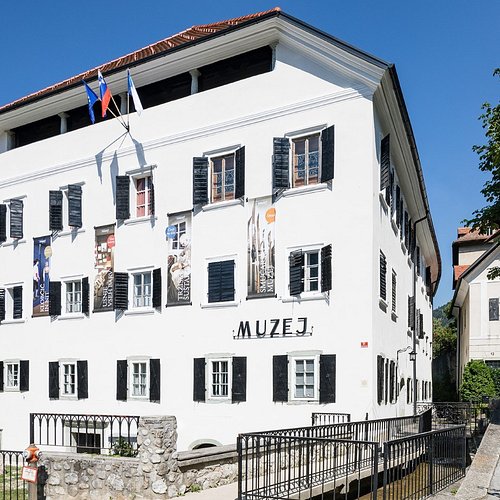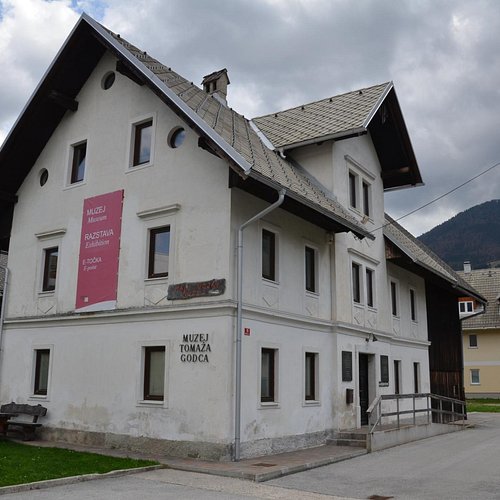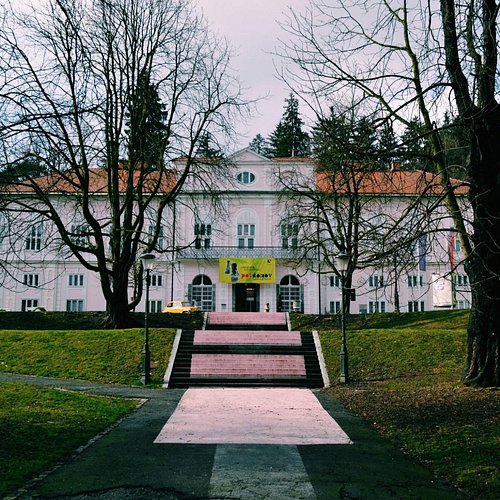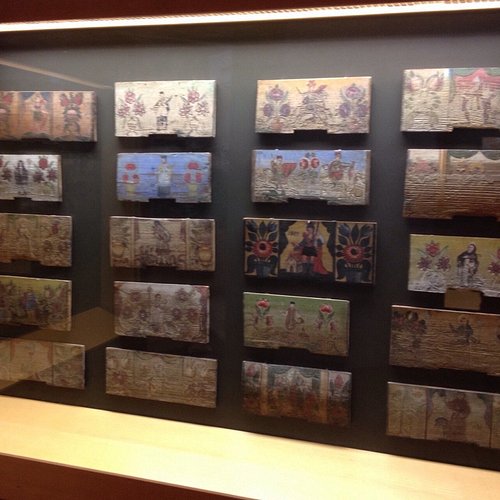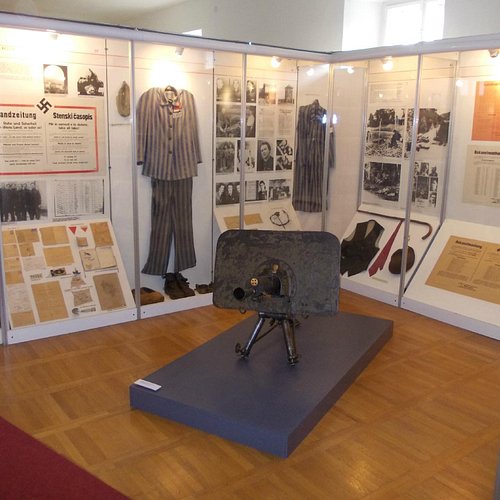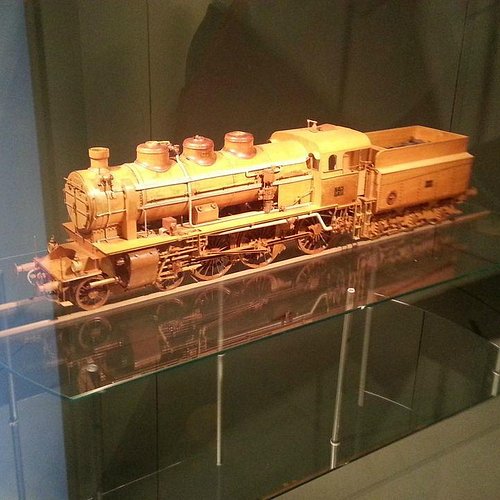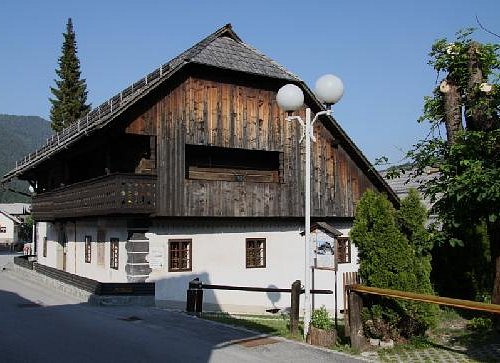Top 10 Museums in Upper Carniola Region, Slovenia
Discover the best top things to do in Upper Carniola Region, Slovenia including Trzic Museum, Tomaz Godec Museum, National Museum of Contemporary History (Muzej Novejse Zgodovine Slovenije), Beekeeping Museum (Cebelarski Muzej), Oplen House Museum, Skofja Loka Museum, Technical Museum of Slovenia, Railway Museum, Slovenian Alpine Museum, Liznjekova house.
Restaurants in Upper Carniola Region
1. Trzic Museum
Overall Ratings
5.0 based on 8 reviews
The exhibition "Tržiški šuštarji" at the Musem of Tržič presents the richest shoemaking collection in Slovenia. The exhibition presents the remarkable tradition of Tržič shoemaking, which thousands of people from Tržič made a living with, and offers the opportunity to see first-hand the old manually crafted footwear and the Peka industrial production and their results, which reflected in the shoe-wearing culture of the people of Tržič and other Slovenians. Tržič is one of our oldest sports and skiing centres, from which most of the Slovenian Winter Olympics team members hail. It is not a coincidence, therefore, that the Slovenian Ski Museum opened its doors right here. The permanent exhibition displays the history of skiing, from the first testimonies in prehistoric times until today. A special place is occupied by the skiers from Tržič, who competed at the Winter Olympics for the first time in 1948. The exhibition presents the most resounding results obtained by Jože, Šlibar, Bojan Križaj, Andrej Jerman and Žan Košir. Part of the exhibition is dedicated to the great names of the Slovenian alpine skiing, who achieved the greatest successes at the Olympics and World Championships, and to the winners of the World Cup. In addition to the mentioned exhibitions, the Musem of Tržič displays other crafting collections (tanner, wheelwright, blue-printing and textile collections). One of the rooms is dedicated to the Borns, a family of barons that marked the life in the settlement of Jelendol and the wider area of Tržič from the end of the 19th to the 20th century.
Reviewed By pero82 - Zagreb, Croatia
I'm not lover of museums but this one is small and entertaining enough. Fist we looked at history of skiing in Slovenian...Tina Maze is the best. :-) Then we looked at Trzic history of producing shoes and indigo cloth painting. Did you know that Trzic had 91 shoe makers? Wow! This museum is must see!
2. Tomaz Godec Museum
Overall Ratings
5.0 based on 2 reviews
The museum bears the name of its former owner, Tomaz Godec, a skilled tanner, excellent sportsman, mountaineer and tourist worker in the Bohinj area. He was one of the initiators of the so-called Bohinj Rebellion of 1941 and was shot as a hostage in Mauthausen. There you can visit a permanent exhibition about Bohinj in first and second world war, and also the Tannery museum. In following years we
3. National Museum of Contemporary History (Muzej Novejse Zgodovine Slovenije)
Overall Ratings
4.5 based on 162 reviews
The Museum explores the history of Slovenia from 1914 up to nowadays. In addition to its exhibitions, the Museum also offers a variety of programmes for both children and adults. It carries out activities in the field of culture, education and research, collaborating with various institutions, and thus serves as a bridge between the general public and historical science. It connects the fates of 20th century Slovenian people and provides visitors with answers to questions about their own identity in modern times. The Museum also serves as a gathering place for groups of all kinds and as a place for dialogue and reflection. It not only answers questions, but it also raises questions and assists visitors in their search for answers, forming a type of partnership in which the Museum serves as a dynamic, innovative and welcoming establishment.
Reviewed By Telgip - Guildford, United Kingdom
This is a great museum, located in Tivoli Park, following the modern history of Slovenia during the 20th century. Well laid out chronologically and with translations into English, it offers a range of exhibits, including some fascinating films. Downstairs was a photographic exhibition of the work of Edi Šelhaus which we especially enjoyed. At €8 for the family to go in, this was great value for money and for us. the most interesting and enjoyable museum in Ljubljana.
4. Beekeeping Museum (Cebelarski Muzej)
Overall Ratings
4.5 based on 128 reviews
Reviewed By JanKnee - San Diego, United States
If you have the time, make sure that you visit this museum. It has an amazing collection of bee-related items, shows an informative short video about bees, and contains a live hive that's set up in a way that you can view the hive in action.
5. Oplen House Museum
Overall Ratings
4.5 based on 7 reviews
Oplen House was opened to the public only in 1991. The shingle covered house is a typical Bohinj homestead, where all the rooms still contain the original equipment and furniture, representing an interesting portrayal of the way of life in Bohinj in the beginning of the 20th century. Oplen House is a typical farmhouse which was built as a longhouse with living and farm rooms in the same structure, featuring an authentic black kitchen (one of the few houses where fire can still be lit in the fireplace in this chimney-less kitchen), hiša (today’s living room) with bogkov kot (a corner with a cross), kamra (chamber), ispa (attic), a barn, and various original farm tools and equipment.
6. Skofja Loka Museum
Overall Ratings
4.5 based on 41 reviews
Reviewed By Jamesholoholo - Honolulu, United States
The Museum takes up all of the castle inside and the field out back. Not “the highest university level” for the collection but that does not negate the excellence of the material and presentation and understanding of the historical significance. The two women at the ticket desk inside are fluent in several languages and know their history and offer additional information. I am always amazed at how engaging and energetic and informative Slovenian people in the museums, shops, stores, and cafes are to be of service and share their town and country.
7. Technical Museum of Slovenia
Overall Ratings
4.5 based on 70 reviews
A place where technical heritage and nature tell many great stories…Behind the gates of a former Carthusian monastery you can find Slovenia’s largest museum – The Technical Museum of Slovenia. It is located in the most beautiful natural surroundings on the outskirts of Ljubljana. Several collections can be seen in the museum: from forestry, woodworking, hunting, fishing and agricultural departments, to textiles, printing, traffic and electrical engineering. The attention of most visitors is drawn towards the water-driven elements -the flour mill, blacksmith’s workshop, fulling mill and veneer sawmill. Road vehicle fans won’t be disappointed either. They can admire the oldest surviving car from Slovenia or enjoy the sight of the limousines that once belonged to President Tito, Premier of former Yugoslavia. Apart from the guided tour in Slovene, English, Italian and German languages through the museum collections, visitors can also attend several workshops and demonstrations, through which they can truly experience the technical spirit of the past. With prior arrangement, we can organize workshops and demonstrations for groups outside of our schedule. In addition to the permanent collection, you can also visit some temporary exhibitions. Museum’s opening hours:Tuesday - Friday: 8 a.m. – 4 p.m. (July and August: 10 a.m. – 6 p.m.) Saturdays: 9 a.m. - 5 p.m.Sundays and holidays: 10 a.m. – 6 p.m.Mondays: closed.From 4th December until 1 March the museum is closed for visitors (except for groups announced in advance) due to unheated rooms.
Reviewed By TravelSloveniaPage - Ljubljana, Slovenia
TMS is a nice day educational relaxation between history and beautiful nature. Suitable for all, even small kids, as they have many things to do and see. Interesting history building and exhibitons.
8. Railway Museum
Overall Ratings
4.5 based on 112 reviews
Reviewed By lauratravel171 - Exeter, United Kingdom
We drove from Croatia to visit the railway museum after seeing reviews online. There is a pay and display car park on site which was reasonable. (We paid €3 for 10 hours). The museum is signposted on the actual street but if on foot, head towards the central railway station. It took us about 15 mins ( we used google maps). The museum itself is spread across two buildings with an original roundhouse housing their main locative display and workshops. We had the pleasure of meeting some of the staff who gave us a tour. There is also an amazing collection of signalling equipment, uniforms and communication equipment. We particularly liked the mock set up of the chief’s office and the carriage seats. So glad we went and definitely worth the €3.50 entrance fee.
9. Slovenian Alpine Museum
Overall Ratings
4.5 based on 37 reviews
The way is the story – the story is the way In the Slovenian Alpine Museum the past and the future go hand in hand. A rich collection of items with diverse historical stories, rich photographic and archive material, and a comprehensive professional booklet give the visitor the chance to grasp the popularity and importance of the mountaineering activity in the Slovenian territory. The permanent exhibition is based on the concept of a museum story, which we experience through our own climb up the mountain.
10. Liznjekova house
Overall Ratings
4.5 based on 36 reviews
The most well preserved secular building is the 300-year-old Liznjekova house in the centre of Kranjska Gora. This was a rich landowner’s home and, at one time, it was also an inn. The wooden part of the house was built in the second half of the 17th century while the small, brick room beside was constructed in the 18th century, in the Baroque style. In its time the Liznjekova house was an example of the most advanced architecture in Slovenia. Its design was the prototype for other farmhouses with a cellar that served also as a barn, it had a brick ground floor with a wooden living room, a brick-built black kitchen, a small bedroom, broad hall, small room and another small bedroom off the hall and one wooden pillar above the entrance. The house retained its original architecture until the end of the 19th century. Since then, nothing has been changed apart from the ground floor windows and new walls which have been installed in the hall and the side entrance. In addition to the black kitchen and the old room layout, nowadays the building houses an ethnographic museum collection and a permanent exhibition of the life and work of Josip Vandot, the author of the popular children’s stories about Kekec.

